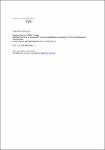Infection Barriers to Successful Xenotransplantation Focusing on Porcine Endogenous Retroviruses
Denner, Joachim
Tönjes, Ralf R.
Xenotransplantation may be a solution to overcome the shortage of organs for the treatment of patients with organ failure, but it may be associated with the transmission of porcine microorganisms and the development of xenozoonoses. Whereas most microorganisms may be eliminated by pathogen-free breeding of the donor animals, porcine endogenous retroviruses (PERVs) cannot be eliminated, since these are integrated into the genomes of all pigs. Human-tropic PERV-A and -B are present in all pigs and are able to infect human cells. Infection of ecotropic PERV-C is limited to pig cells. PERVs may adapt to host cells by varying the number of LTR-binding transcription factor binding sites. Like all retroviruses, they may induce tumors and/or immunodeficiencies. To date, all experimental, preclinical, and clinical xenotransplantations using pig cells, tissues, and organs have not shown transmission of PERV. Highly sensitive and specific methods have been developed to analyze the PERV status of donor pigs and to monitor recipients for PERV infection. Strategies have been developed to prevent PERV transmission, including selection of PERV-C-negative, low-producer pigs, generation of an effective vaccine, selection of effective antiretrovirals, and generation of animals transgenic for a PERV-specific short hairpin RNA inhibiting PERV expression by RNA interference.
Dateien zu dieser Publikation
Keine Lizenzangabe

